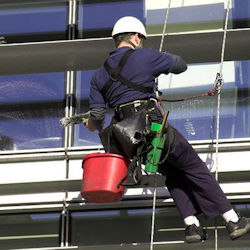13 Hazard Types
The following 13 hazard categories are adapted from Product Safety Management and Engineering, by Willie Hammer, ASSP Pub. This publication is an excellent text to add to your library.
- Acceleration: This is just a fancy term for "fall" hazard. Acceleration happens when we speed up or slow down too quickly. It also occurs when any object is being set in motion or its speed increased. Whiplash is a common injury as a result of an acceleration hazard. Hazards from deceleration and impact, especially from falls, also exist in the workplace.
- Biohazards: Hazards of harmful bacterial, viruses, fungi, and molds are becoming a greater concern to everyone at work. The primary routes of infection are airborne and bloodborne.
- Chemical reactions: Chemical reactions can be violent, and can cause explosions, dispersion of materials and emission of heat. Chemical compounds may combine or break down (disassociate) resulting in chemicals with reactive properties. Corrosion, the slow combination of iron and water, is a common chemical reaction and results in loss of strength and integrity of affected metals.
Knowledge Check Choose the best answer for the question.
1-8. What kind of hazards can be violent, cause explosions, and the emission of heat?
You forgot to answer the question!

